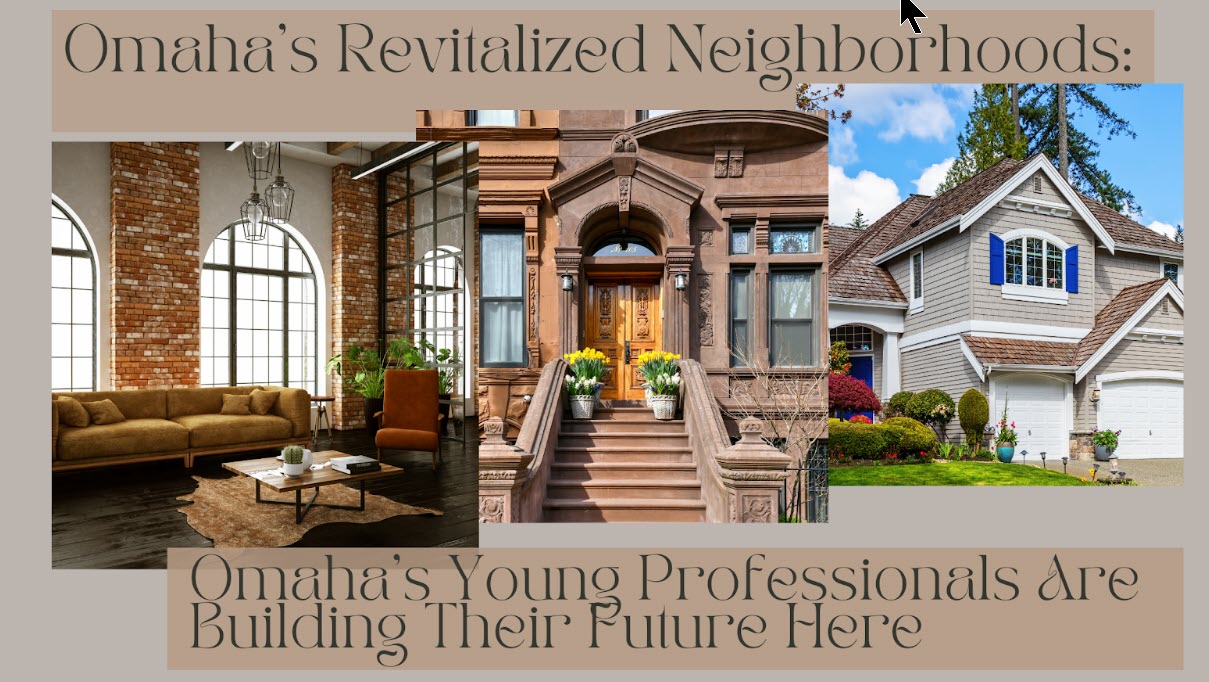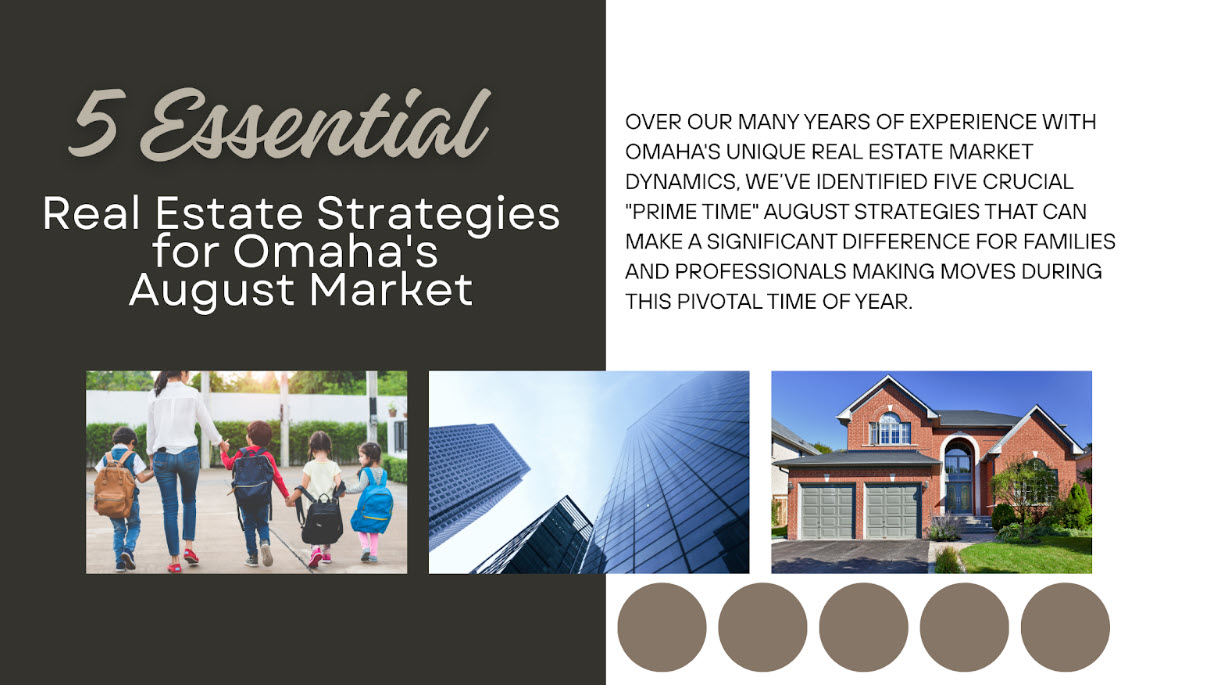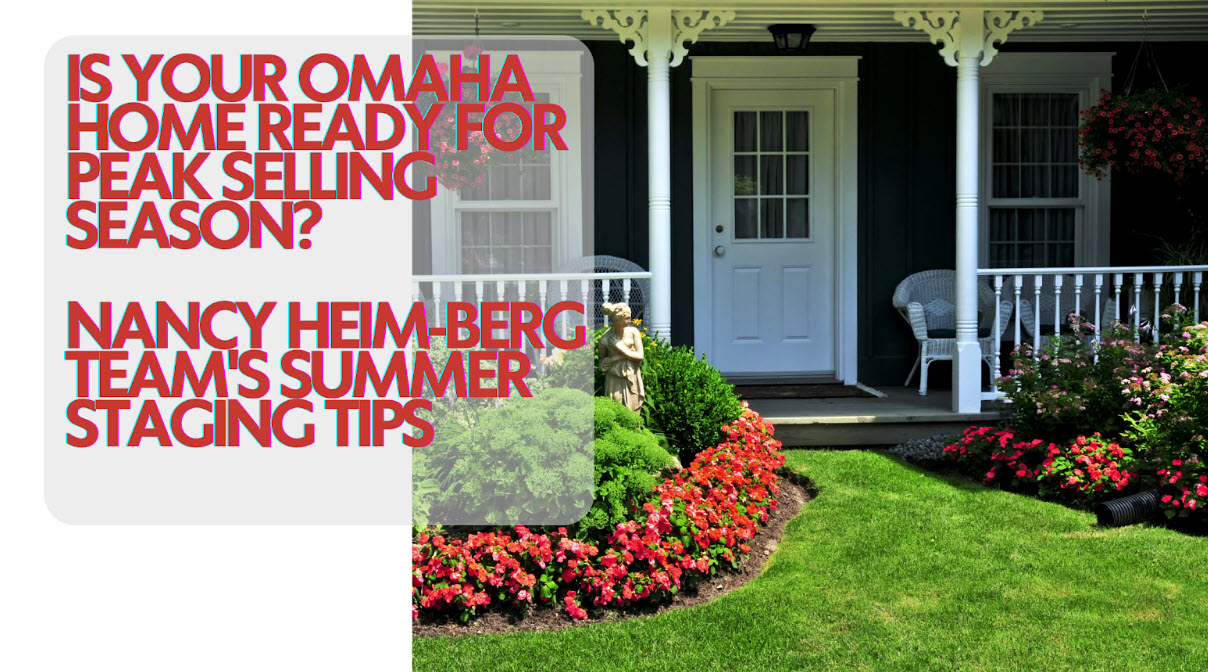
Living in Omaha means embracing the beauty of the Missouri River while respecting its power. Are you looking for a home in Benson? Considering an investment property near Carter Lake, or thinking about a charming house in Florence? No matter what your situation, understanding flood zones isn't just smart – it's essential for protecting your most significant investment.
The Heim-Berg Team has been helping Omaha families navigate these waters for years, bringing deep local knowledge about everything from the 2011 Missouri River flood to the latest FEMA map updates that took effect in March 2025. Our expertise and experience enable clients to make informed decisions that protect both their financial interests and peace of mind.
The Reality of River City Living
Omaha's relationship with water runs deep – literally and figuratively. Situated along the mighty Missouri River, with the Elkhorn, Platte, and Papillion Creek systems weaving through the metro area, our city has seen its share of dramatic flood events. From the historic 1881 flood that expanded the Missouri River to five miles wide at Omaha to the unforgettable 2011 summer-long flood that lasted 101 days, water has shaped both our landscape and our real estate considerations.
The most recent major event, the 2019 "Heartland Flood," served as a stark reminder that Mother Nature doesn't follow property lines or respect development timelines. When the Elkhorn River crested at nearly 25 feet – more than 10 feet above flood stage – neighborhoods that thought they were safe found themselves dealing with unexpected challenges.
Understanding FEMA's New Flood Maps
Here's where things get interesting for current and prospective homeowners. FEMA released new flood maps for Omaha and its surrounding Douglas, Sarpy, and Cass counties, which took effect on March 25, 2025. These aren't just minor tweaks to old maps – they represent a complete overhaul based on sophisticated lidar technology and modern modeling that accounts for everything from increased urbanization to changing rainfall patterns.
The Papio-Missouri River Natural Resources District officials estimate that some homeowners who never needed flood insurance before could now face requirements for coverage costing $300 to $400 per month. That's a significant budget consideration that can affect both buying decisions and ongoing homeownership costs.
On the other hand, some properties located in high-risk zones have been previously exempted from flood zone requirements, potentially saving homeowners thousands of dollars in annual insurance costs. It's a mixed bag that requires careful analysis of each specific property.
What These Zone Changes Mean for You
The new flood maps incorporate decades of data about how Omaha has grown and changed. As Amanda Grint from the Papio-Missouri River NRD explains, increased development means more rooftops and concrete, which creates more runoff and affects flood patterns throughout the metro area. Areas like Saddle Creek, which weren't previously mapped in floodplains, now find themselves in designated flood zones.
One longtime Omaha homeowner recently discovered that their Benson-area property, which had never required flood insurance in 30 years of ownership, now falls into a flood zone that needs coverage. While initially frustrated, they came to appreciate having a clear picture of their actual risk rather than operating under outdated assumptions.
Decoding the Flood Zone Alphabet Soup
Understanding flood zone designations doesn't require an engineering degree, but it does help to know the basics. Zone AE areas face a 1% annual chance of flooding – that's what FEMA refers to as the "100-year flood." However, it's really about probability, not timing. These high-risk areas require flood insurance for federally backed-mortgages.
Zone X areas have a lower risk, either a 0.2% annual chance of flooding or areas protected by levees. While insurance isn't required in these zones, many savvy homeowners opt to carry coverage anyway, especially given Omaha's history of flooding.
It's important about to work with local experts who understand both current conditions and long-term trends to navigate the tricky parts. For example, did you know that these designations can change as new data becomes available and communities evolve and grow?
The Real Cost of Flood Insurance
Let's discuss numbers, as flood insurance costs vary significantly based on multiple factors. Under FEMA's newer Risk Rating 2.0 system, individual property characteristics matter more than ever. Your specific elevation, distance from water sources, and even the type of foundation for your home all influence pricing.
When a property is located in a high-risk zone, annual premiums can range from a few hundred dollars to several thousand, depending on the coverage levels and specific property details. However, FEMA offers discounts for homes built to particular standards, properties with proper flood vents, and located in communities that participate in the Federal Community Rating System, which Omaha does.
Here's an insider tip from experienced Omaha real estate professionals: even if you're not in a mapped flood zone, consider flood insurance anyway. Standard homeowner's insurance typically doesn't cover flood damage, and approximately 25% of flood claims originate from properties located outside high-risk zones. The cost of coverage in lower-risk areas can be surprisingly affordable, sometimes less than $200 per year.
Omaha's Flood Protection Infrastructure
Understanding flood zones also means appreciating the extensive infrastructure protecting our community. Omaha maintains a 13-mile levee and floodwall system that protects the eastern part of the city, including Eppley Airfield. The system performed admirably during the 2011 flood when the river crested at over 36 feet, well below the levee's capacity.
The Papio-Missouri River Natural Resources District continues investing in flood control projects throughout the metro area. Recent improvements include new reservoirs and enhanced drainage systems that help protect neighborhoods from both river flooding and urban runoff during heavy rainfall events.
These protection systems factor into flood zone determinations and insurance costs. Properties may qualify for reduced insurance rates if certified levee systems protect them, while areas without protection face higher risk classifications.
Climate Considerations and Future Planning
Today's flood maps incorporate not just historical data but also projections about changing weather patterns. Omaha has experienced more intense rainfall events in recent years, with the kind of "bomb cyclone" that caused the 2019 flooding becoming more common.
The new FEMA maps account for these trends, which explains why some areas that never flooded historically now carry flood zone designations. It's not fear-mongering – its risk management based on the best available science and local observations.
Climate experts, such as South Dakota's state climatologist, Dennis Todey, remind us that major flooding isn't a matter of if but when. While we can't predict precisely when the next major event will occur, we can plan intelligently for the reality that it will happen eventually.
Navigating Property Purchases in Flood-Prone Areas
Does being in a flood zone mean you shouldn't buy a particular property? Not necessarily. Some of Omaha's most desirable neighborhoods have flood considerations, and many properties in flood zones have never actually experienced flooding. The key is making informed decisions with full knowledge of the risks and costs involved.
When comparing and evaluating properties, consider factors beyond flood zone designations. For example, has the specific property flooded before? What's the elevation relative to nearby water sources? Are there planned infrastructure improvements that might affect future risk? Has the property been modified with flood-resistant features?
One successful client/investor specializes in Omaha properties near the Missouri River, but only invests after extensive due diligence about elevation, flood history, and insurance costs. By factoring these considerations into purchase prices and rental rates, they've built a profitable portfolio while managing risk appropriately.
The Insurance Shopping Strategy
If you do need flood insurance, don't assume all policies are identical. While FEMA provides most flood insurance through FEMA's National Flood Insurance Program, private flood insurance options are becoming increasingly available and sometimes offer better coverage or pricing.
Work with insurance agents familiar with Omaha's specific flood considerations. They understand local factors, such as how proximity to levees affects pricing, which areas have experienced repeated claims, and how property improvements can reduce premiums.
Remember that flood insurance policies have a 30-day waiting period before taking effect, so you can't wait until storms are approaching to purchase coverage plans, especially if you're buying in a flood zone.
Making Smart Decisions with Local Expertise
The complexity of flood zone considerations makes local expertise invaluable. Our team has lived and worked in Omaha for many years. Accordingly, the Nancy Heim-Berg Team understands current flood maps, having lived through Omaha's flood events, worked with clients on insurance claims, and helped families make informed decisions about their flood risk.
Over the years, we've come to understand which neighborhoods have consistently remained dry, even during significant events, which areas have experienced repeated issues, and how infrastructure improvements affect long-term property values. This institutional knowledge enables clients to avoid costly surprises and identify properties that align with their risk tolerance and budget.
When evaluating properties, they help clients understand not only the current flood zone status but also factors such as planned drainage improvements, historical flood patterns, and how changes in upstream development might impact future risk.
The Bottom Line on Flood Zone Considerations
Living in Omaha means accepting that water is part of our story, but it doesn't mean accepting unnecessary risk. Understanding flood zones, insurance requirements, and mitigation options enables you to make informed real estate decisions that protect your investment and your family.
The new FEMA flood maps, effective since March 2025, provide the most accurate picture yet of flood risk throughout the metro area. While some properties face new requirements, others benefit from updated science that more accurately reflects their actual risk level.
Flood zones are an integral part of the due diligence process that helps ensure your real estate decisions stand the test of time – and weather. If you're buying your first home, relocating to Omaha, or investing in rental properties, prioritizing flood zone awareness is essential.
You're successful real estate transaction depends on whether you work with professionals who understand flood zone complexities and can guide you through the process with confidence. In a city shaped by rivers and resilience, knowledge truly is power when it comes to making smart real estate decisions.
Ready to navigate Omaha real estate with confidence? Nancy Heim-Berg and The Heim-Berg Team bring the local expertise you need to make informed decisions about flood zones, insurance, and property values.
Contact The Heim-Berg Team today:
Phone: (402)677-9024
Website: https://www.omahaarealiving.com/
Let Omaha's real estate experts help you find the perfect property while protecting your investment from day one!








.jpg) Spring is a great time to sell your home in Omaha, Nebraska. The weather is pleasant, the flowers are blooming, and buyers are eager to find their dream home. But how can you make your home stand out from the competition and attract more offers? Here are some spring home staging tips for Omaha that can help you sell faster and for more money.
Spring is a great time to sell your home in Omaha, Nebraska. The weather is pleasant, the flowers are blooming, and buyers are eager to find their dream home. But how can you make your home stand out from the competition and attract more offers? Here are some spring home staging tips for Omaha that can help you sell faster and for more money.









